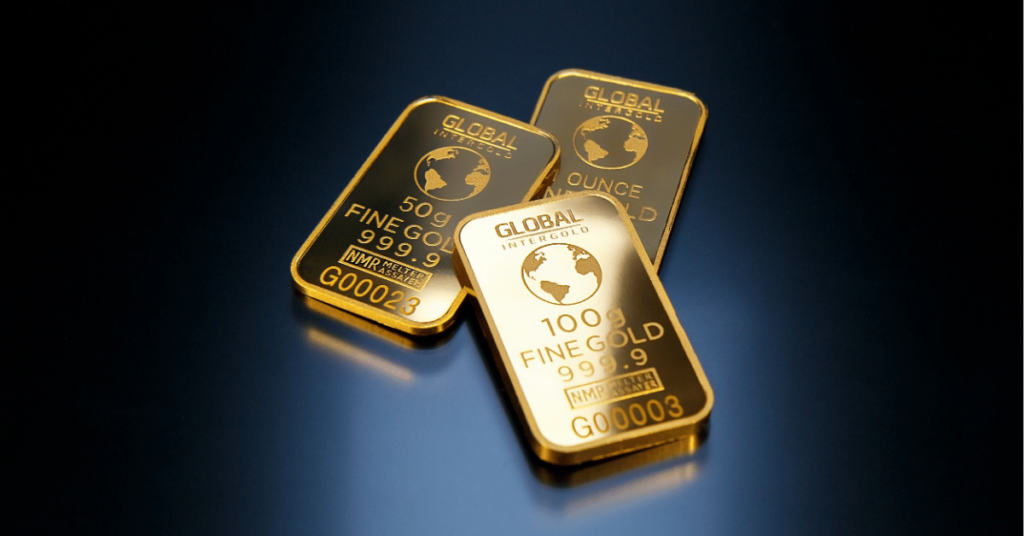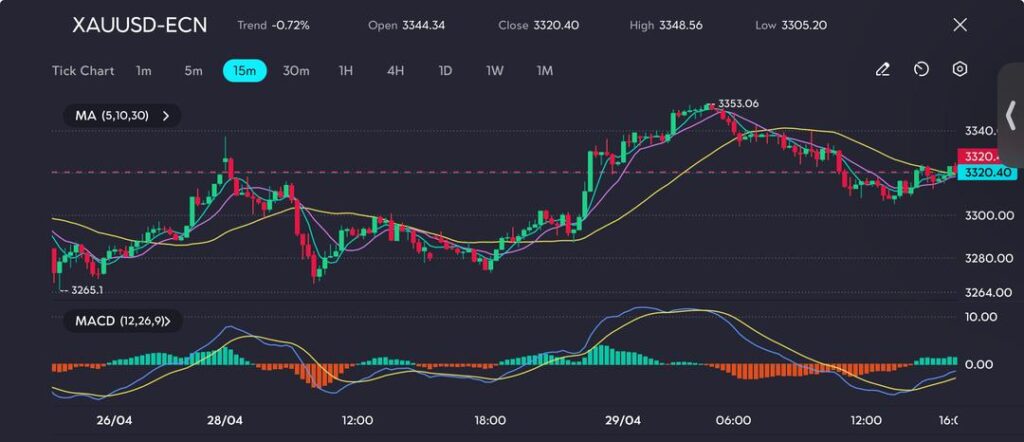
Gold prices are under pressure as global investors shift focus away from safe-haven assets, responding to signs of easing geopolitical risks and improved trade prospects. With fresh optimism in the air and a stronger US dollar offering an alternative refuge, market sentiment is tilting towards risk-taking, prompting a short-term pullback in gold demand.
Gold prices edged lower on Monday as appetite for safe-haven assets declined following a shift in global trade sentiment.
Spot gold (XAU/USD) fell by approximately 0.5%, settling near USD 3,320 after reaching an intraday high of USD 3,348.56.
The decline follows fresh optimism surrounding United States trade talks—not with China, but with 17 other international partners.
Analysts at ING suggest that China’s absence from the negotiation table may temporarily reduce market tensions and increase risk appetite, drawing capital away from traditionally defensive assets such as gold.
Adding to the pressure, the strengthening US dollar has made gold more expensive for overseas investors, further curbing demand.
As the dollar gains favour as a competing safe-haven, gold’s appeal may continue to wane in the near term.
Gold is currently under renewed downside pressure, with XAU/USD slipping from a recent peak of 3,353.06 to around 3,320.40.

Short-term moving averages (5, 10, 30) are trending lower, forming a bearish crossover that suggests sellers maintain control.
Momentum indicators such as the MACD show a widening negative histogram, though recent bars indicate that the selling momentum may be slowing.
If the support zone near 3,305.20 holds, a temporary rebound is possible. However, failure to defend this level could open the door to a further pullback toward the 3,280–3,265 range.
While the immediate trend remains bearish, the 15-minute chart suggests that gold may be entering slightly oversold conditions, hinting at a potential pause in the sell-off.
Despite the recent decline, gold prices remain over 25% higher year-to-date, buoyed by persistent macroeconomic uncertainty and unpredictable shifts in US policy.
ING notes that continued inflows into gold-backed ETFs and rising central bank gold reserves underpin strong long-term demand.
Extended concerns over US-China trade relations and broader economic fragility are expected to reinforce gold’s role as a long-term hedge against volatility.
While short-term weakness may persist, the broader uptrend in gold remains intact.
Click here to open account and start trading.